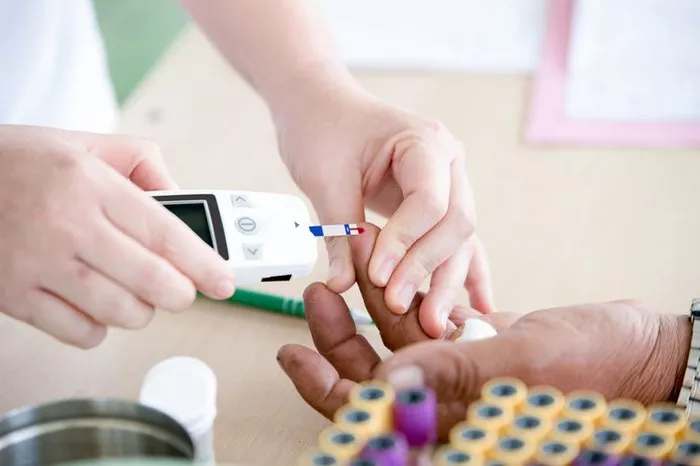In the landscape of diabetes mellitus, Latent Autoimmune Diabetes in Adults (LADA) stands as a distinct entity, blurring the lines between type 1 and type 2 diabetes. Often misdiagnosed or overlooked, LADA poses unique challenges in management and requires a nuanced understanding to provide optimal care. In this comprehensive article, we delve into the intricacies of LADA, exploring its definition, pathophysiology, clinical features, diagnosis, treatment, and implications for individuals living with this lesser-known form of diabetes.
Defining Latent Autoimmune Diabetes in Adults (LADA):
Latent Autoimmune Diabetes in Adults (LADA), also known as type 1.5 diabetes or slow-onset type 1 diabetes, is a form of diabetes that shares features of both type 1 and type 2 diabetes. LADA is characterized by autoimmune destruction of pancreatic beta cells, leading to insulin deficiency over time. Unlike classical type 1 diabetes, which typically presents in childhood or adolescence and manifests with rapid onset of symptoms, LADA develops more slowly and is diagnosed in adulthood.
Pathophysiology of LADA:
The pathophysiology of LADA involves autoimmune-mediated destruction of pancreatic beta cells, similar to type 1 diabetes. Individuals with LADA produce autoantibodies against pancreatic islet cells, including glutamic acid decarboxylase (GAD) antibodies, islet cell antibodies (ICA), insulin autoantibodies (IAA), and zinc transporter 8 antibodies (ZnT8). These autoantibodies target and attack beta cells, impairing insulin secretion and leading to progressive beta cell failure.
While the autoimmune process in LADA resembles that of type 1 diabetes, there are key differences. In LADA, the onset of autoimmune destruction may be more insidious, and individuals often retain some degree of endogenous insulin secretion initially. However, over time, beta cell function declines, resulting in the need for exogenous insulin therapy.
Clinical Features of LADA:
The clinical presentation of LADA can vary widely and may overlap with both type 1 and type 2 diabetes. Common features of LADA include:
1. Adult Onset: LADA is typically diagnosed in adults, often between the ages of 30 and 50, although it can occur at any age.
2. Gradual Onset: Unlike type 1 diabetes, which often presents with abrupt symptoms of hyperglycemia and ketosis, LADA has a more gradual onset, with progressive worsening of blood glucose control over months or years.
3. Autoimmune Markers: Most individuals with LADA have detectable autoantibodies, such as GAD antibodies, although some may lack these markers.
4. Insulin Sensitivity: In the early stages of LADA, individuals may exhibit features of insulin resistance similar to type 2 diabetes, such as obesity or metabolic syndrome.
5. Variable Progression: The rate of beta cell decline and progression to insulin dependence can vary among individuals with LADA, with some maintaining partial beta cell function for many years before requiring insulin therapy.
Diagnosis of LADA:
Diagnosing LADA can be challenging due to its overlapping features with type 1 and type 2 diabetes. Key considerations in the diagnosis of LADA include:
1. Autoantibody Testing: Serum autoantibody testing, including GAD antibodies, is essential for identifying autoimmune-mediated beta cell destruction characteristic of LADA.
2. Clinical Presentation: Clinical features such as age at onset, rate of progression, family history, and response to oral glucose-lowering agents can provide clues suggestive of LADA.
3. C-peptide Levels: Measurement of C-peptide levels can help assess endogenous insulin secretion and differentiate LADA from classical type 1 diabetes, where C-peptide levels are typically low.
Treatment Strategies for LADA:
Management of LADA involves a multifaceted approach tailored to individual needs and clinical characteristics. Treatment strategies may include:
1. Lifestyle Modification: Emphasize lifestyle interventions such as healthy eating, regular physical activity, weight management, and smoking cessation to optimize glycemic control and reduce cardiovascular risk factors.
2. Oral Glucose-Lowering Agents: Initially, oral glucose-lowering agents such as metformin, sulfonylureas, or dipeptidyl peptidase-4 (DPP-4) inhibitors may be used to improve glycemic control in individuals with LADA who have preserved beta cell function.
3. Insulin Therapy: As beta cell function declines over time, many individuals with LADA will ultimately require insulin therapy to maintain blood glucose levels within target ranges.
4. Personalized Approach: Tailor treatment regimens to individual preferences, lifestyle factors, comorbidities, and glycemic goals. Consider factors such as insulin sensitivity, insulin resistance, and presence of autoimmune markers in treatment decision-making.
5. Regular Monitoring: Monitor glycemic control, autoantibody status, beta cell function, and diabetes-related complications regularly to guide treatment adjustments and optimize outcomes.
Implications and Future Directions:
Recognizing and understanding LADA is critical for providing appropriate care and optimizing outcomes for individuals living with this unique form of diabetes. Future research efforts should focus on elucidating the underlying mechanisms of LADA, refining diagnostic criteria, and developing targeted therapies to preserve beta cell function and prevent progression to insulin dependence. Increased awareness among healthcare providers and improved access to autoantibody testing are essential for timely diagnosis and management of LADA.
Conclusion:
Latent Autoimmune Diabetes in Adults (LADA) represents a distinct phenotype within the spectrum of diabetes mellitus, characterized by autoimmune-mediated beta cell destruction and progressive insulin deficiency. While sharing features of both type 1 and type 2 diabetes, LADA poses diagnostic challenges and requires a tailored approach to treatment and management. By raising awareness, promoting early detection, and implementing personalized therapeutic strategies, healthcare providers can optimize outcomes and improve quality of life for individuals living with LADA. Continued research efforts and collaborative initiatives are essential to unraveling the mysteries of LADA and advancing our understanding and management of this intriguing form of diabetes.


























